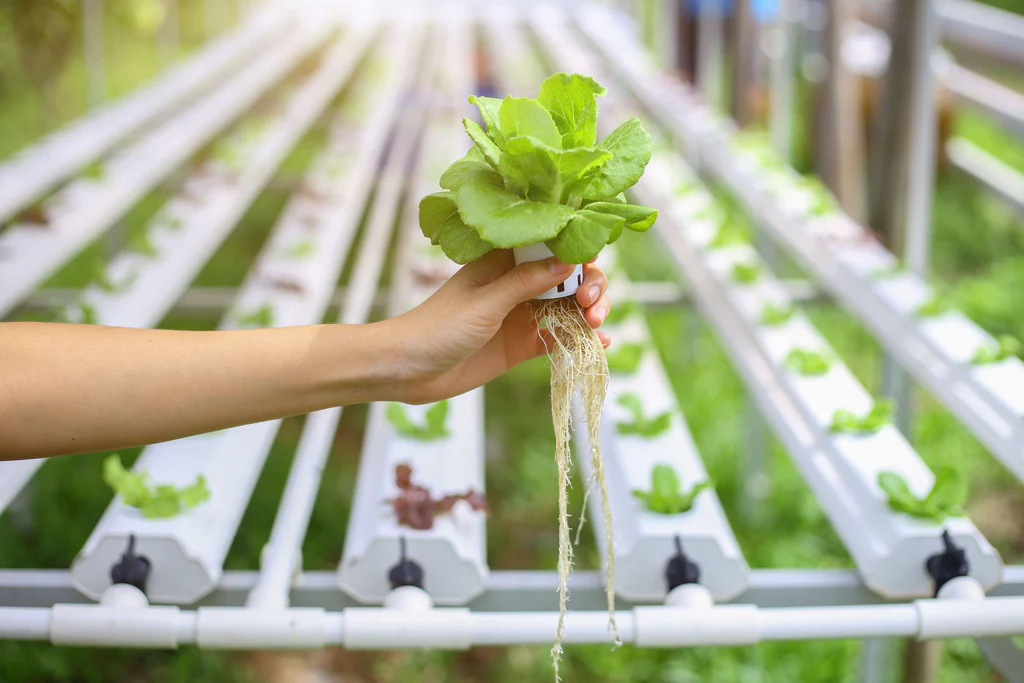Whether gardening professionally or as a hobby, it feels incredible. A relaxing and soothing activity, gardening allows you to grow crops and give something back to nature. When you picture gardening, you probably imagine growing vegetables from scratch.
However, with changing times, gardening styles are also changing. Instead of traditional gardening, people are switching to hydroponics. Unlike conventional farming, a hydroponic model lets you grow food using fewer materials.
What is Hydroponic Gardening?
A hydroponic garden operates without soil. It replaces soil with water that contains calcium, phosphorus, and potassium, allowing nutrients to reach the seeds and plants quickly.
What are the Benefits of Hydroponic Farming?
A hydroponic farm is beneficial to the farmer and the yield. From producing healthy and prosperous crops quickly and comfortably to using fewer resources and space, hydroponic farming modernises the scope and future of gardening.
Consumes Less Space
Unlike soil-based methods, hydroponic technology requires significantly less room. Since the water directly reaches the roots, depending on the technique, they do not spread wide looking for nutrients. Regardless of the number of plants, each plant’s root consumes less room, allowing you to grow more crops in a limited area.
Less Water Usage
Contrary to the popular notion, water-based crops use less water than soil-based crops. Water is rapidly becoming scarce, even a limited resource in many parts of the world. According to the World Health Organisation, two billion of the world’s population function without safe water systems. Given the water depletion rate, it is crucial to conserve water.
Traditional gardening methods use both soil and water to grow plants. However, only a tiny amount of water reaches the plant’s roots, and the remaining water evaporates. A hydronic technique recirculates water — it ensures water reaches the plant’s roots directly, allowing them to use the required amount and sending the rest of the water back to the system.
Produces Faster and Better Crops
Most vegetables grown during traditional methods take months to develop correctly. Absorbing water and nutrients from the soil is a slow and lengthy procedure. On the other hand, a hydroponic system creates an ideal ecosystem and greenhouse for the plants, ensuring they receive proper and balanced nutrients. In addition, the greenhouse accelerates the growth cycle, generating a higher crop volume in less time.
Conventional farming systems pluck the produce before letting it ripe completely. Instead, traditional farmers use artificial and inorganic resources, such as gases, to mature the crop, which reduces the food’s natural nutrients. Since hydroponic-grown plants naturally absorb the right amount of water and nutrients, the food grown is healthy and high-quality.
No Soil Required
Soil erosion, degradation, acidity, and salinity are common problems faced by the agriculture sector. According to experts, the Earth has lost almost fifty per cent of its topsoil in the past century. Additionally, depending on their nature and structure, every crop requires different soils to grow. Hydroponics removes soil from the equation entirely and uses water instead. This system ensures nutrients reach the roots directly and conserves soil, preventing erosion and degradation.
Uses a Smaller Workforce
Traditional farming involves tilling, weeding, fertilising, and labour-intensive tasks such as shovelling grains, lifting heavy machinery, carrying seed bags, and picking up rocks. A hydroponic system majorly functions independently, reducing the need for an additional workforce. This system cuts down production and labour costs and saves time and energy.
Hydroponics is a substitute for conventional farming methods. It allows you to grow fruits and vegetables faster and produce a high-quality yield while conserving soil and water.
Read also : techtimesmedia









